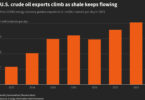F.P. Report
WASHINGTON: Nonbank financial institutions (NBFIs) are an essential source of capital in financial markets and provide vital funding to the U.S. economy. In 2016, the Financial Stability Oversight Council (Council) issued a statement describing risks to financial stability that may arise from certain asset management products and activities.[1] The market dislocations of March 2020 demonstrated that some NBFIs remain vulnerable to acute financial stresses and may amplify or transmit stress in the financial system. In 2021, the Council made it a priority to evaluate and address the risks to U.S. financial stability posed by three types of NBFIs: hedge funds, open-end funds, and money market funds (MMFs). At its meeting on February 4, 2022, the Council received updates from member agency staff on progress over the past year regarding these three types of NBFIs through working groups and Council member agency rulemaking activity. The Council will continue to evaluate, monitor, and address these risks to financial stability in 2022.
Hedge Funds
In 2021, the Council reestablished its Hedge Fund Working Group. A primary objective of this interagency staff-level working group was to update the Council’s assessment of potential risks to U.S. financial stability from hedge funds, their activities, and their interconnections with other market participants. Recent market events have provided opportunities to assess how financial strain at hedge funds—particularly those with significant leverage—could create risks to financial stability, and how a reduction in financial intermediation by hedge funds during periods of market stress could exacerbate market impairment. Hedge funds were among the three largest sellers of Treasury securities by category in March 2020, and they materially contributed to the Treasury market disruption during this period, although they were not its sole cause. The working group also found that the failure of Archegos Capital Management—a family office employing leveraged strategies also used by hedge funds—transmitted material stress to large, interconnected financial institutions.
The Council supports the Hedge Fund Working Group’s efforts to establish an interagency risk monitoring system to identify potential emerging financial stability risks posed by hedge funds and to promote interagency collaboration in understanding those risks. The Council also supports the working group’s efforts to consider options to mitigate the risks it has identified.
The Hedge Fund Working Group also ascertained that gaps exist in the availability of data related to hedge funds, and Council member agencies are taking steps to address these gaps. The Securities and Exchange Commission (SEC) and the Commodity Futures Trading Commission (CFTC) are developing amendments to Form PF, the primary regulatory data source on the private fund industry. The SEC has proposed a new requirement that certain advisers to hedge funds report timely information about events that indicate significant distress at a fund. In addition, the Council supports the Hedge Fund Working Group’s recommendation that the Office of Financial Research (OFR) consider ways to obtain better data on the uncleared bilateral repurchase agreement market, an important source of leverage for hedge funds.
Open-end Funds
In 2021, the Council also established an interagency staff-level Open-end Fund Working Group to assess potential risks to U.S. financial stability arising from open-end funds, particularly their liquidity and redemption features. This working group evaluated the role of open-end funds in the market stress that occurred during the early stages of the COVID-19 pandemic, when large-scale investor redemptions prompted funds to liquidate assets. U.S. open-end funds were among the largest recorded sellers of U.S. Treasuries, U.S. municipal bonds, and possibly U.S. corporate debt during this period. The impact of these asset sales on U.S. fixed income markets, together with sales by other investors, was magnified by poor liquidity and stressed trading conditions. Open-end funds were not the sole or primary cause of market stress—there was no single, primary cause—but the size of their asset liquidations indicates that they were one of the significant contributors to this stress.
The Council supports the Open-end Fund Working Group’s continued analysis of the potential risks to financial stability that may arise from liquidity transformation at open-end funds. SEC staff is considering whether to make recommendations regarding potential reforms of open-end funds to enhance resiliency during stressed market conditions, and the Council is encouraged by the SEC’s continued engagement on this critical issue.
Money Market Funds
MMFs are significant participants in short-term funding markets, which are a substantial source of funding for businesses and local governments and liquidity for investors. As described in the Overview of Recent Events and Potential Reform Options for Money Market Funds released by the President’s Working Group on Financial Markets in December 2020,[2] significant outflows from MMFs during the early stages of the COVID-19 pandemic destabilized short-term funding markets. As in 2008, taxpayer-backed government intervention was necessary to support MMFs and short-term funding markets more broadly and to restore market functioning. These events underscored that MMFs have structural vulnerabilities that can create or transmit stress to short-term funding markets.
The SEC recently proposed reforms that would increase the minimum liquidity requirements for MMFs, require some MMFs to adopt swing pricing, and remove MMFs’ ability to impose liquidity fees and redemption gates when funds fall below certain liquidity thresholds. These measures should help reduce the financial stability risks posed by MMFs. The Council supports the SEC’s efforts to reform MMFs and strengthen short-term funding markets.






